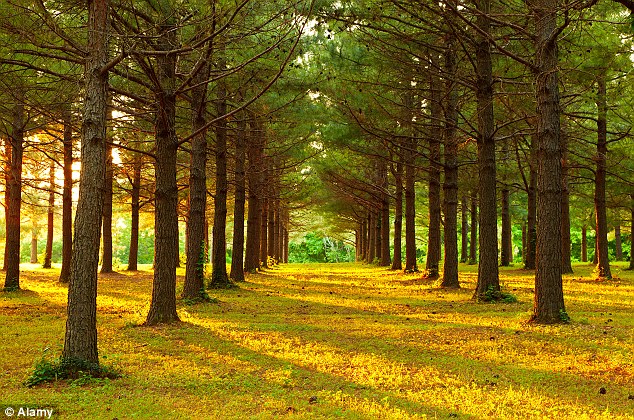
Just as humans make a noise as they desperately try to gulp air, living trees make ultrasonic popping noises as they draw in as much moisture as possible to survive during a drought.
The sounds are a hundred times faster than can be heard by the human ear, but a team led by French physicist Philippe Marmottant at Grenoble University believe they have been able to slow the process down sufficiently to be heard during a recent lab experiment.
Using slivers of dead pine tree wood bathed in hydrogel, they recreated the conditions of a living tree.
The gel was then exposed to an artificially dry environment, and the researchers listened in as the wood began to make popping sounds.
The noise comes from air bubbles rising up and then disappearing, a process called cavitation.
As leaves on a tree collect carbon dioxide, they open their pores, leaving them vulnerable to losing water.
To counteract this, trees collect water from the ground through their root system.
The effort of trying to pull this moisture in from the ground creates the air bubbles.
'We can track the articulation of bubbles, and what we found is the majority of the sounds that we hear are linked to bubbles,' said Mr Marmottant.
'I say majority, because there may be other causes like cracks in the wood or insects. But the majority of sounds that occur during cavitations (tiny air bubbles that pop out in the water) are due to these bubbles.'
Scientists are now racing to try and come up with equipment capable of listening to these unique sounds created by nature.
It will also prove useful because these air bubbles can block the flow of water in living trees and prove deadly.
Mr Marmottant said he is in early discussions with biologists to produce a sensor.
'These biologists have good experience to do this, so we hope that our study will bring some new information about the sounds that could be heard in trees,' he said.



Reader Comments
to our Newsletter